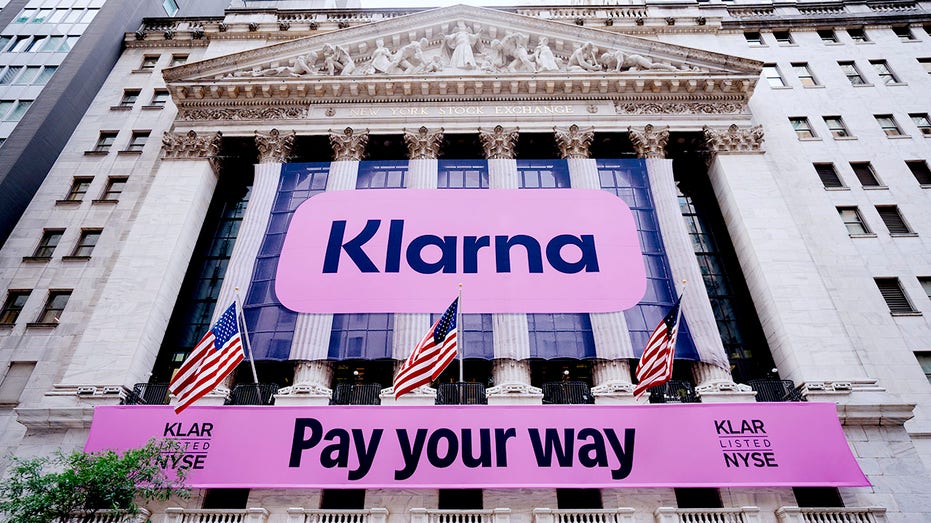Buy now, pay later company Klarna is making its long-awaited initial public offering on Wednesday after raising $1.37 billion.
The Swedish firm priced its IPO at a higher-than-expected $40, above the $35 to $37 expected range, valuing the company around $15 billion.
COSTCO ROLLS OUT BUY NOW, PAY LATER FOR BIG ONLINE PURCHASES THROUGH AFFIRM
CEO Sebastian Siemiatkowski told FOX Business that years ago he and Chairman Michael Moritz envisioned an IPO modeled after Google’s. They wanted to take the company public “when it was a global phenomenon, it was profitable, but it had a lot of growth ahead of itself.” To be successful globally, he noted, meant that the company had to be profitable in the U.S., a feat achieved just last year, according to Siemiatkowski.
Founded in 2005, Siemiatkowski is credited with growing the startup into a global AI-powered payments and shopping platform that has partnerships with 720,000 retailers, including Walmart Canada, it’s biggest omni-retail partnership. To date, it has more than 100 million active users.
Wednesday marks a strategic milestone for the company, as its chief executive said that he is not selling his shares during the IPO, commonly seen in the industry as an exit move, but instead is invested for the long haul, signaling confidence in the company’s long-term value. Siemiatkowski says Klarna’s goal is to compete directly with retail banks, such as JPMorgan Chase, Bank of America, Wells Fargo and Citibank.
| Ticker | Security | Last | Change | Change % |
|---|---|---|---|---|
| JPM | JPMORGAN CHASE & CO. | 299.42 | +1.58 | +0.53% |
| BAC | BANK OF AMERICA CORP. | 50.13 | -0.15 | -0.30% |
| WFC | WELLS FARGO & CO. | 80.48 | -0.25 | -0.31% |
| C | CITIGROUP INC. | 97.01 | -0.31 | -0.32% |
“I think that there is this demand and people want something else from their bank. Most people are not that super excited about what banks have been doing for them in the last few decades,” he said. “There’s been competitive banks, but there hasn’t been banks that are willing to do things differently, in my opinion.”
FINANCIAL EXPERT WARNS AGAINST THE HIDDEN TRAPS OF ‘BUY NOW, PAY LATER’ SERVICES

He’s confident that the company can be a strong competitor. Despite only achieving profitability in the U.S. last year, Siemiatkowski said he is confident they can maintain that momentum as Americans become increasingly frustrated with traditional credit cards.
“The key is that we see that there are a lot of Americans out there who are very tired of credit cards [and] of how they feel that they get fooled into lots of debt with lots of interest,” he said.
BUY NOW, PAY LATER USAGE FOR GROCERIES NEARLY DOUBLES AS CONSUMERS STRUGGLE WITH FOOD COSTS
A significant portion of consumers, according to Siemiatkowski, prefer alternatives to traditional credit cards but still want occasional access to credit payment options. To meet that demand, Klarna began testing its debit card in June, developed in partnership with Visa and issued through WebBank.
The Klarna Card lets consumers choose to pay immediately or defer payments when needed, both online and in-store, at more than 150 million Visa-accepting merchants worldwide. The company considers it as a more consumer-friendly alternative to traditional credit cards. Since its launch, Siemiatkowski said Klarna has had 700,000 Americans sign up, and there are over 5 million still on the wait list.
| Ticker | Security | Last | Change | Change % |
|---|---|---|---|---|
| PYPL | PAYPAL HOLDINGS INC. | 66.76 | -0.92 | -1.36% |
| AFRM | AFFIRM HOLDINGS INC. | 88.34 | -0.08 | -0.09% |
Buy now, pay later services like Klarna and rivals Afterpay, Affirm and PayPal have surged in popularity as consumers look for ways to stretch their budgets by paying in often interest-free installments as economic pressures weighed on households. Traditionally, they have been marketed and utilized for big-ticket items, but Siemiatkowski said Klarna is targeting everyday spending, from groceries and travel to subscriptions like Spotify and Disney+.
While Klarna isn’t immune to the pitfalls of credit, Siemiatkowski said its losses run 20% to 30% below industry averages, helped by the app’s transparency and relatively small, interest-free loans of about $100.
He also said that Klarna can quickly adjust its lending standards, making it more nimble than traditional banks in a downturn.
Read the full article here
